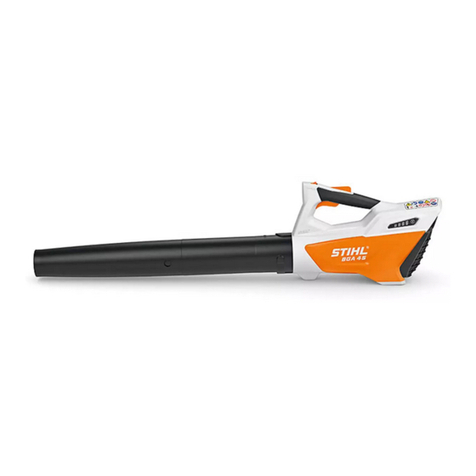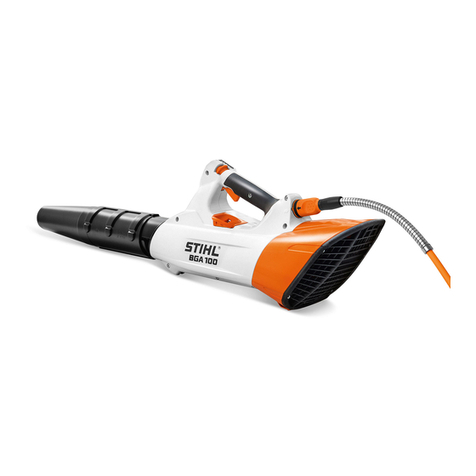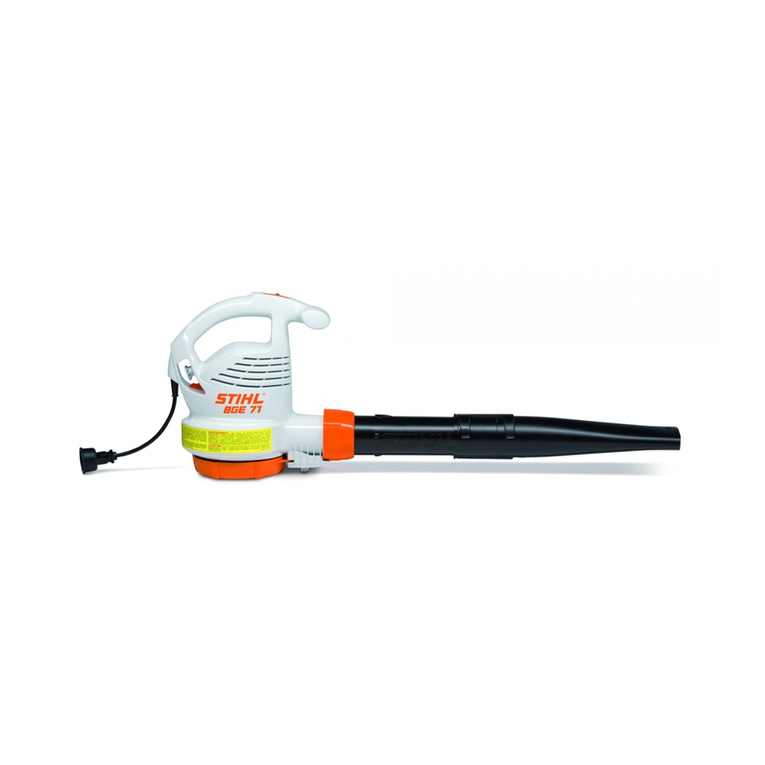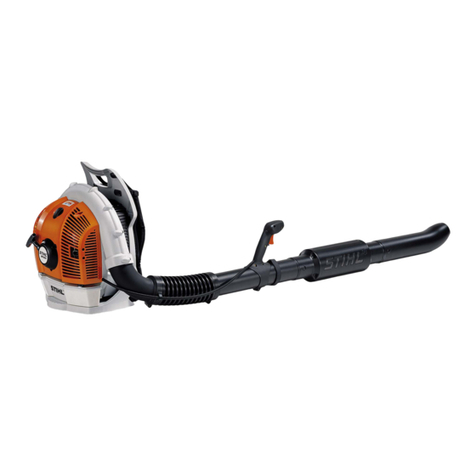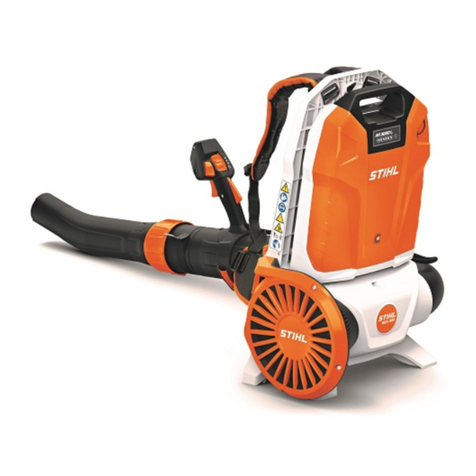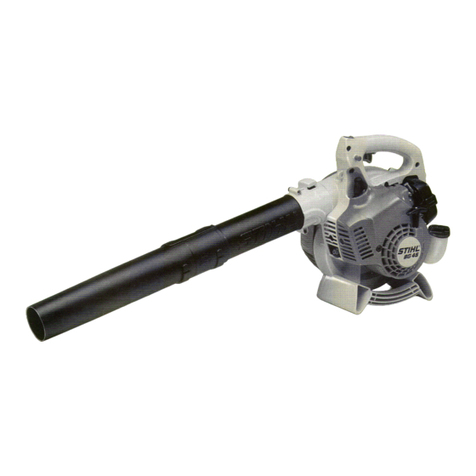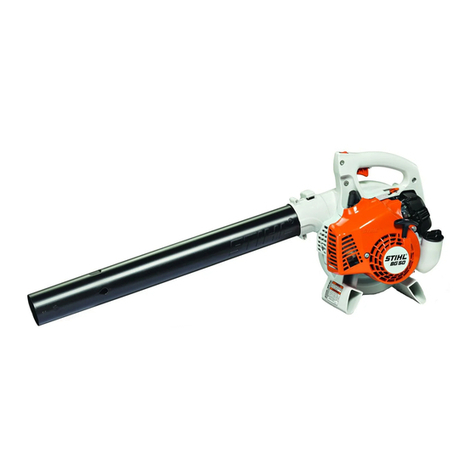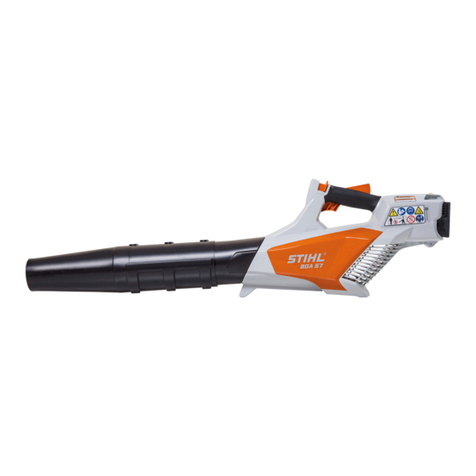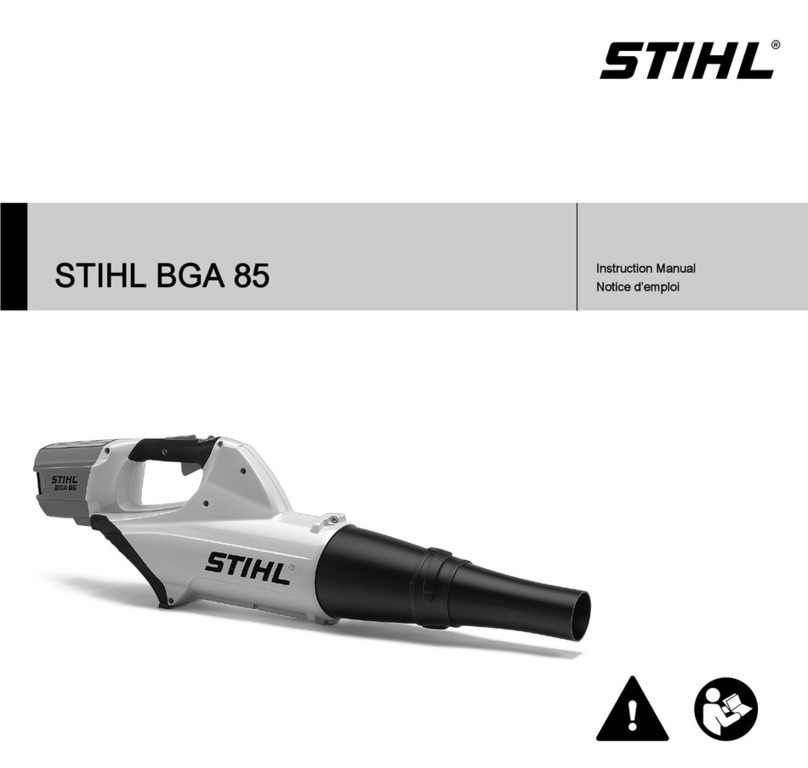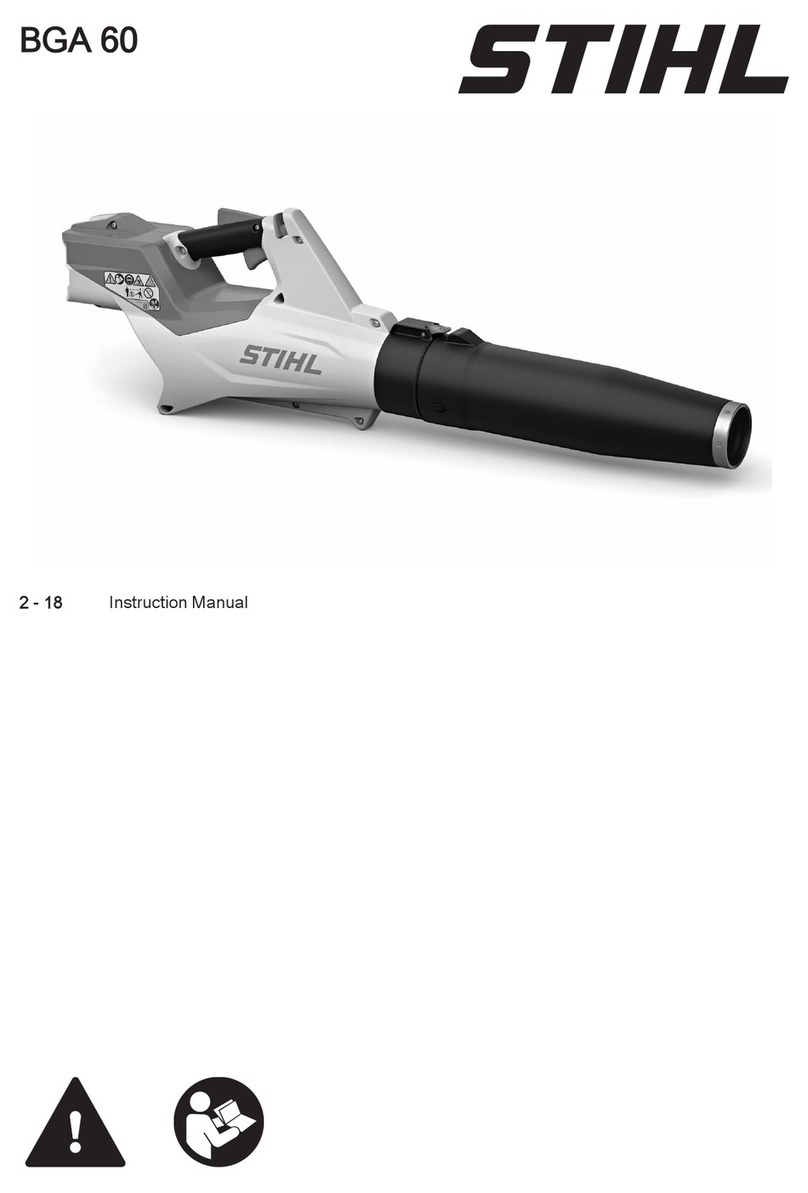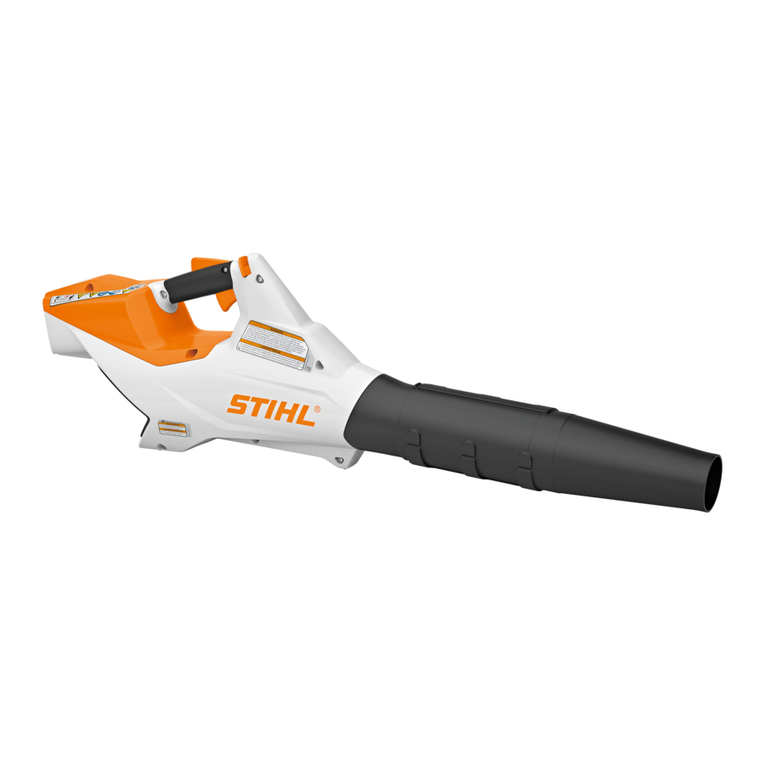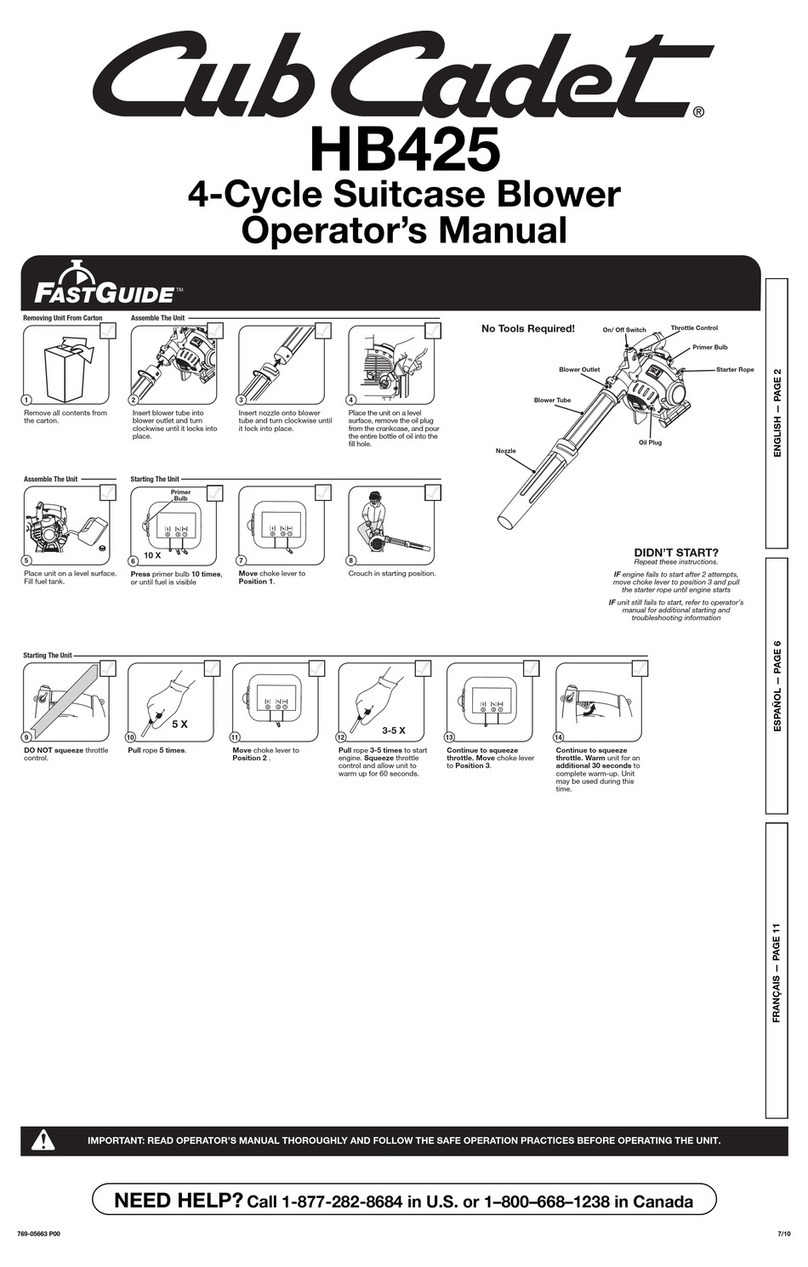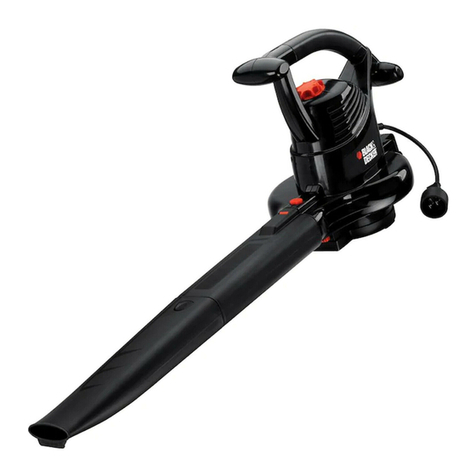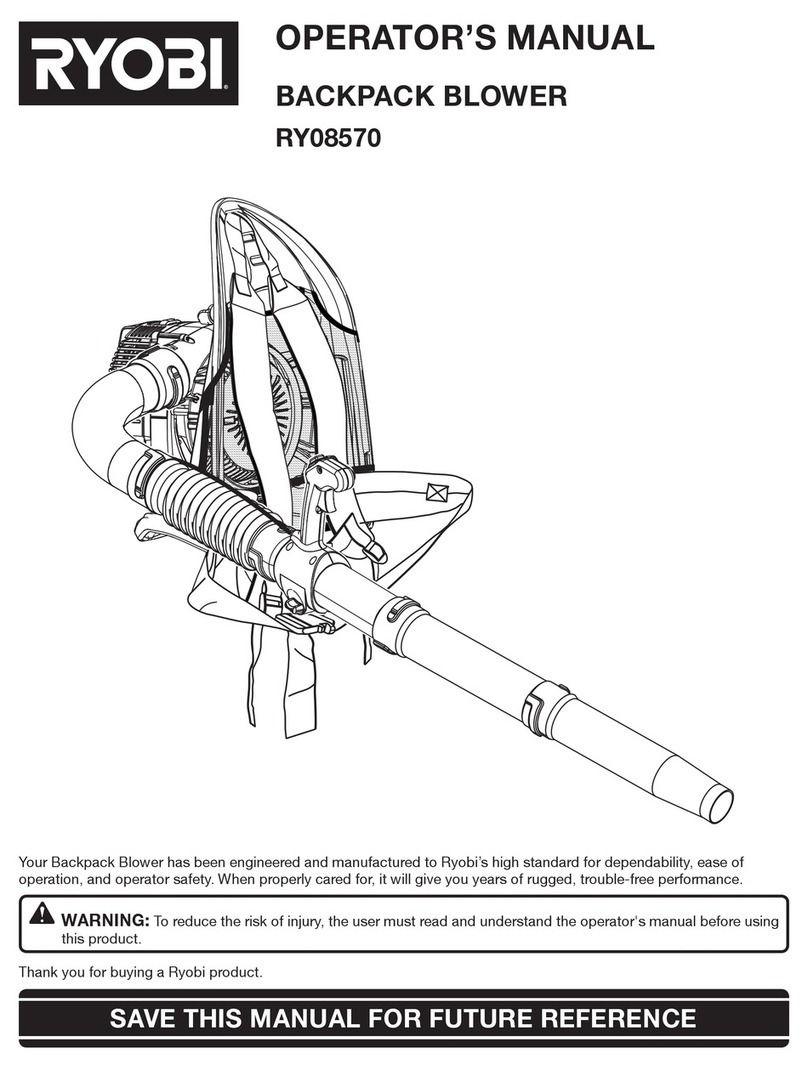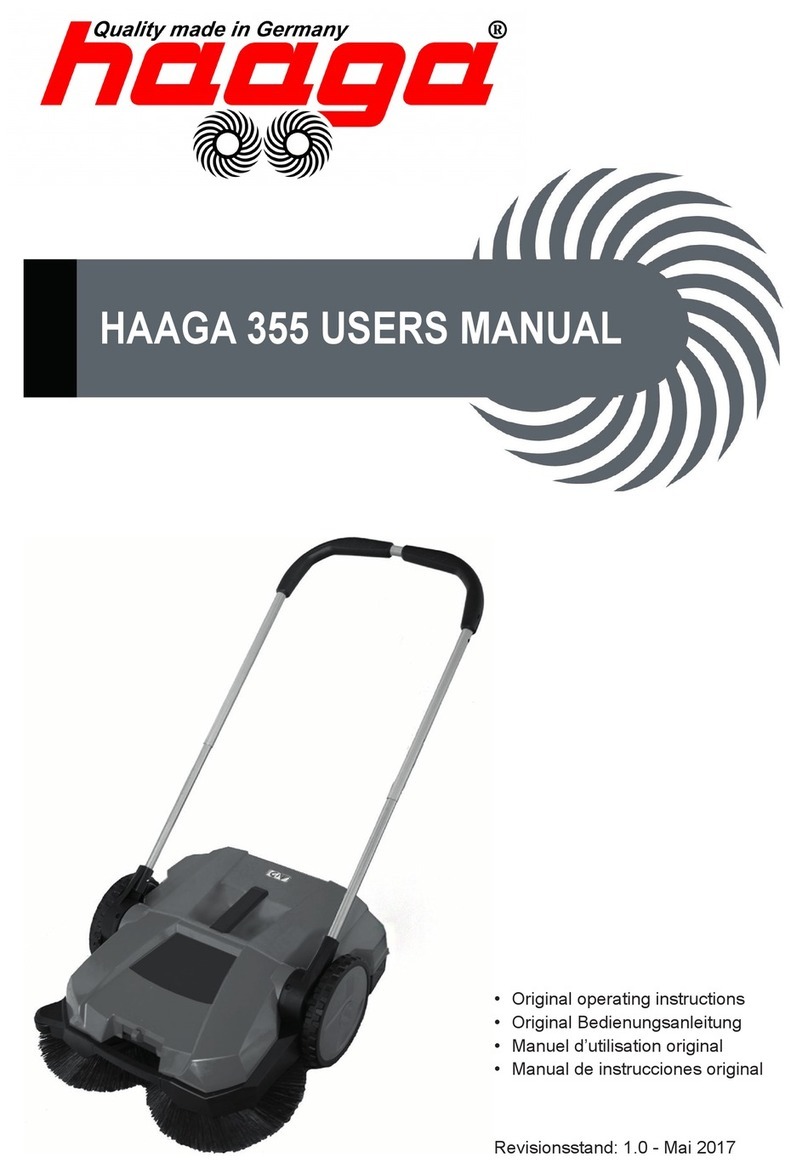
3BR 420
English
Special safety
precautions must be
observed when working
with the power tool.
It is important that you
read, fully understand and
observe the following
safety precautions and
warnings. Keep this
instruction manual in a
safe place for later reference. Non-
observance of the safety precautions
may result in serious or even fatal injury.
Always observe local safety regulations,
standards and ordinances.
If you have never used this power tool
model before:
Have your dealer or other experienced
user show you how to operate your
blower or attend a special training
course in blower operation.
Minors should never be allowed to use a
power tool.
Bystanders, especially children, and
animals should not be allowed in the
area where a power tool is in use.
When the machine is not in use (work
break), shut it off so that it does not
endanger others and secure it against
unauthorized use.
The operator is responsible for avoiding
injury to third parties or damage to their
property.
Do not lend or rent your power tool
without the instruction manual. Be sure
that anyone using your power tool
understands the information contained
in this manual.
You must be rested, healthy and in good
physical condition to operate a power
tool.
Persons with pacemakers only: The
ignition system of your unit produces an
electromagnetic field of a very low
intensity. This field may interfere with
some pacemakers. To reduce health
risks, STIHL recommends that persons
with pacemaker consult their physician
and the pacemaker manufacturer before
operating this tool.
Do not operate this power tool while
under the influence of any substance
(drugs, alcohol) which might impair
vision, dexterity or judgment.
This blower is designed for clearing
leaves, grass, paper, light snow and
similar materials in yards, gardens,
sports stadiums, parks or driveways. It is
also suitable for blow-sweeping forest
paths.
Do not use your blower for any other
purpose since this may result in
accidents or damage to the machine.
Never attempt to modify your blower in
any way since this may also result in
accidents or damage to the machine.
Only mount parts and accessories that
are explicitly approved for this power
tool model by STIHL or are technically
identical. If you have any questions in
this respect, consult a specialist dealer.
To reduce the risk of accidents or
damage to the machine, use only high
quality tools and replacement parts.
STIHL recommends the use of STIHL
original tools and accessories. The
characteristics of these components are
specifically designed to match your
machine and meet your performance
requirements.
Safety Precautions and
Working Techniques




